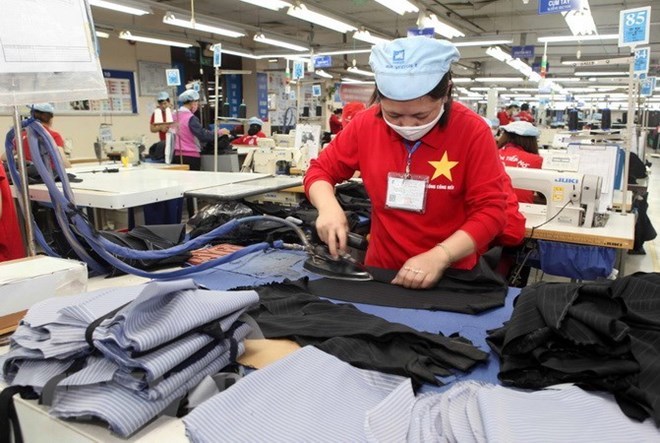
Garment and textile exporters benefit a lot from the CPTPP.
According to Deputy Director of the Ministry of Industry and Trade’s Multilateral Trade Policy Department Ngo Chung Khanh, the CPTPP brings higher added value than Vietnam’s other bilateral and multilateral trade pacts. Canada is having high potential for Vietnamese exports like garments and textiles, leather shoes and seafood.
Canadian consumers can pay for high-value products, he said, adding that it is an important bridge for Vietnamese firms to expand their markets in America.
Meanwhile, Bui Tuan Hoan, an official from the Ministry’s European-American Market Department, said demand for Asian food has been rising in Canada due to the increase in the population of Asian-Canadian people, while Canadian taxes on most tropical fruits will drop to 0 percent, and few strict technical barriers are erected in the country.
Vietnamese fruits will thrive in the Canadian market if exporters pay due attention to improving preservation and transport processes, he said.
Along with two traditional products of frozen shrimp and tra fish, which have gained a foothold in this market, Hoan said shipping processed seafood and top-quality products like tuna, cuttlefish and octopus are avenues worth exploring.
He stressed exports of garments and leather shoes, saying they are the main beneficiaries of the CPTPP. Import duties on garment and textiles will fall from 16-17 percent to 0 percent in four years while that on leather shoes dwindle from 18 percent to 0 percent in 7-11 years.
Under the trade pact, Canada pledges to remove 94.5 percent of tax lines levied on Vietnamese products, and after four years, Vietnam will be exempt from some 96.3 percent of the tax lines.
There is huge room for Vietnam and Canada to cooperate in wood processing and exports, he said, suggesting Vietnam enhance imports of Canadian wood for domestic processing and re-export to the country.
Although there are ample opportunities for Vietnamese businesses in Canada, experts said companies should thoroughly grasp importer’s requirements on product origin and labels.
Trinh Thi Thu Hien from the Ministry’s Foreign Trade Agency said that besides prices and product quality, Canadian customers look to exporters’ prestige, experience, and ability to provide post-sale services when purchasing products.
According to the General Department of Vietnam Customs, Vietnam-Canada trade tripled from 1.14 billion USD in 2010 to 3.85 billion USD last year, with Vietnam’s trade surplus at 2.14 billion USD in 2018.
Trade links between the two countries have improved after they joined the CPTPP. In the first two months of 2019, Vietnam’s exports to Canada exceeded 506 million USD, up 36.6 percent year on year.
The CPTPP, which took effect in Vietnam on January 14, 2019 gathers 11 member states, namely Australia, Brunei, Canada, Chile, Japan, Malaysia, Mexico, New Zealand, Peru, Singapore and Vietnam that altogether make up 13.5 percent of global GDP.-VNA
 Vietnamese exporters are eyeing Canada as ripe for profits thanks to the Comprehensive and Progressive Agreement for Trans-Pacific Partnership (CPTPP), experts said at a conference in HCMC on April 10.
Vietnamese exporters are eyeing Canada as ripe for profits thanks to the Comprehensive and Progressive Agreement for Trans-Pacific Partnership (CPTPP), experts said at a conference in HCMC on April 10.